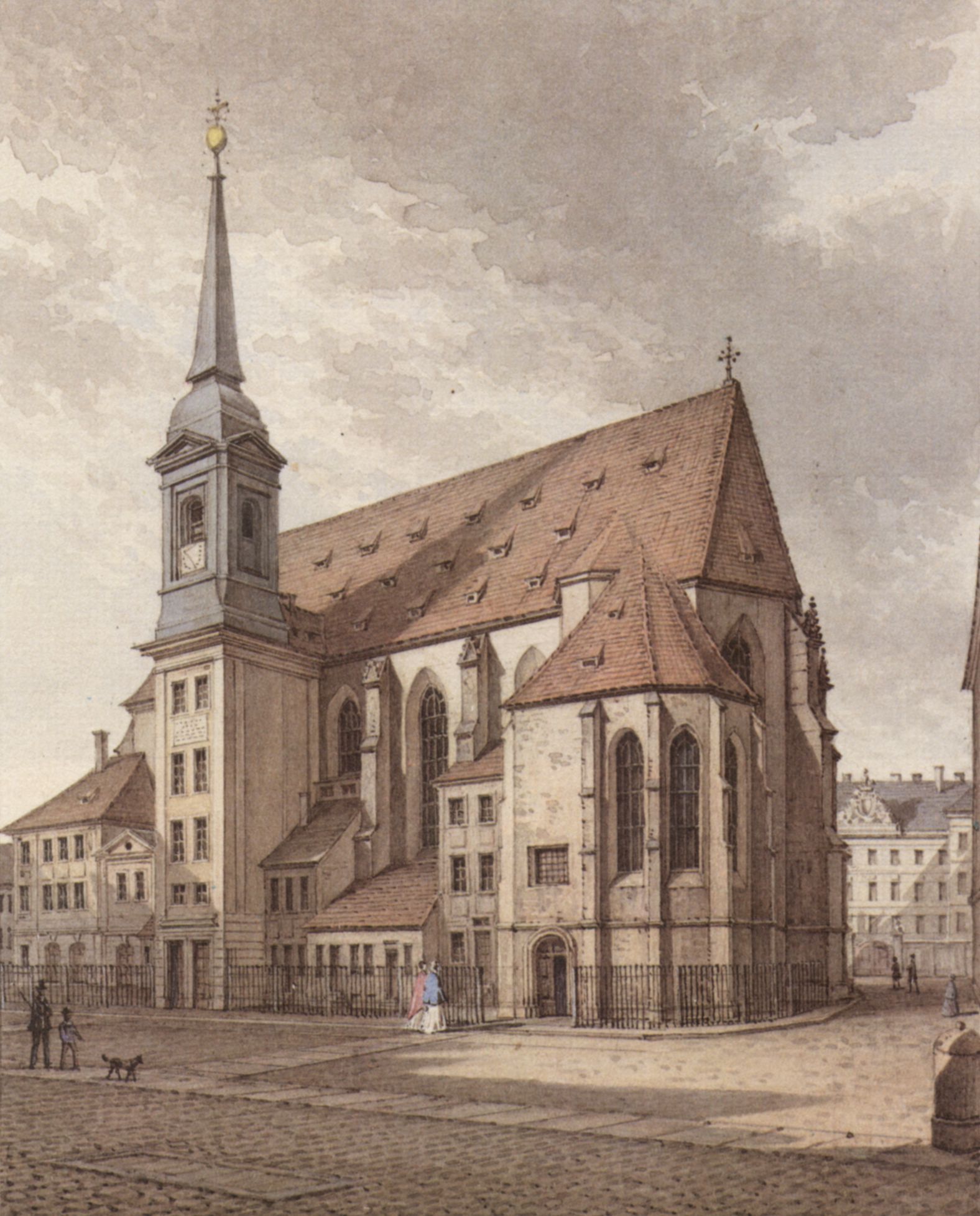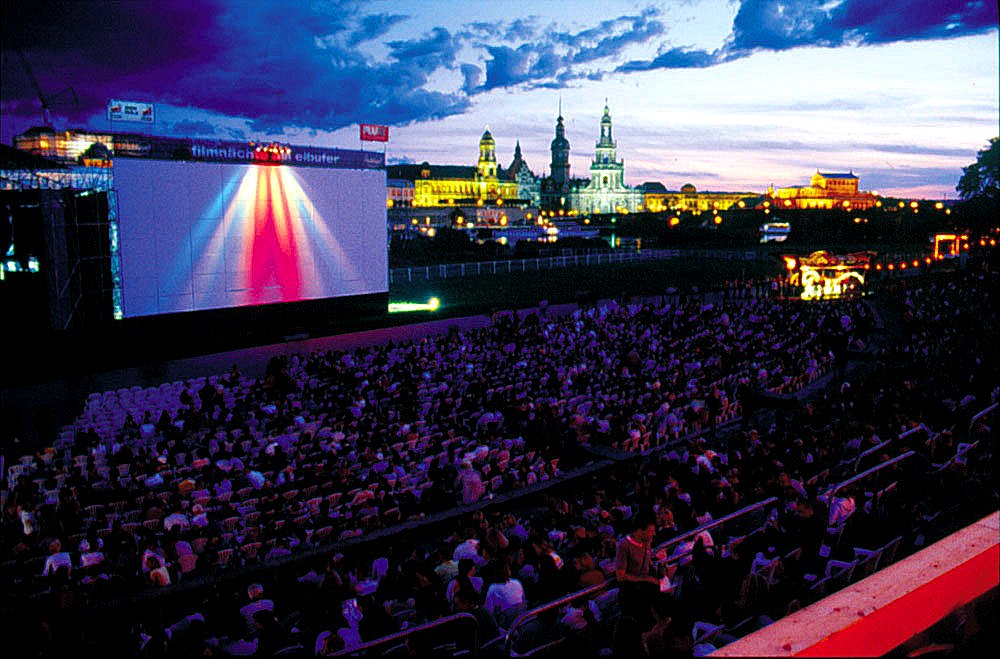|
Dresden City Museum
Dresden City Museum (german: link=no, Stadtmuseum Dresden) is the central city museum for the German city of Dresden. Its displays tell the 800-year story of the city and is the largest and most important of the Dresden State Museums (''Städtischen Museen Dresden''). Its art collections split off in 2000 to form the Dresden City Art Gallery, but both the Art Gallery and the Museum are housed in Dresden's Landhaus. Building and surroundings The Landhaus houses the Dresden City Museum. It was built between 1770 and 1776 and designed by Friedrich August Krubsacius using a mixture of baroque, rococo and classical elements. It was the seat of the Landtag of Saxony (Parliament of Saxony) from 1832 to 1907, when the Landtag was moved to the Ständehaus. The Landhaus is at edge of the Innere Altstadt between Wildstruffer and Landhaus streets, and between the Neumarkt and Pirnaischer Platz. The Polizeipräsidium and the Police Museum is next door. The Church of our Lady and the Kur ... [...More Info...] [...Related Items...] OR: [Wikipedia] [Google] [Baidu] |
Landhaus (Dresden)
The Landhaus is a historic building in Dresden, Germany. Designed to house the Saxony region's Landstand, it was built in the Baroque style between 1770 and 1776 by Friedrich August Krubsacius on the site of the former Palais Flemming-Sulkowski. In September 1775 the Obersteuerkollegium moved into it and in October the Landstand first sat there. It now houses the Dresden City Museum and the Dresden City Art Gallery. History The building was constructed in the late 18th century at Pirna Gate, in the east of the historic inner city. The bombing of Dresden in World War II World War II or the Second World War, often abbreviated as WWII or WW2, was a world war that lasted from 1939 to 1945. It involved the vast majority of the world's countries—including all of the great powers—forming two opposing ... destroyed the building. Since the reshaping of the Dresdner streets Wilsdruffer road was extended and broadened as a highway; part of the front garden was lo ... [...More Info...] [...Related Items...] OR: [Wikipedia] [Google] [Baidu] |
Dresden
Dresden (, ; Upper Saxon: ''Dräsdn''; wen, label= Upper Sorbian, Drježdźany) is the capital city of the German state of Saxony and its second most populous city, after Leipzig. It is the 12th most populous city of Germany, the fourth largest by area (after Berlin, Hamburg and Cologne), and the third most populous city in the area of former East Germany, after Berlin and Leipzig. Dresden's urban area comprises the towns of Freital, Pirna, Radebeul, Meissen, Coswig, Radeberg and Heidenau and has around 790,000 inhabitants. The Dresden metropolitan area has approximately 1.34 million inhabitants. Dresden is the second largest city on the River Elbe after Hamburg. Most of the city's population lives in the Elbe Valley, but a large, albeit very sparsely populated area of the city east of the Elbe lies in the West Lusatian Hill Country and Uplands (the westernmost part of the Sudetes) and thus in Lusatia. Many boroughs west of the Elbe lie in the foreland of the ... [...More Info...] [...Related Items...] OR: [Wikipedia] [Google] [Baidu] |
Städtische Galerie Dresden
The Dresden City Art Gallery (german: link=no, Städtische Galerie Dresden – Kunstsammlung) is the municipal art collection of Dresden, Germany, housed in the city's Landhaus. It was formed by the 19th and 20th century artworks of the Stadtmuseum Dresden, split off from the Museum and given a separate display in 2000. In 2002, Gisbert Porstmann became the founding director of the Dresden City Art Gallery, which officially opened in 2005. Location The Dresden City Art Collection, which is located on the first floor of Dresden's city hall, was erected in 1770–1775 to the designs by the court architect Friedrich August Krubsacius and originally served as the conference building for the Saxon estates. Other nearby museums are the Dresden Fortress Museum and the Albertinum Museum, the latter hosting the New Masters Gallery of the Dresden State Art Collections. The Collection of the Dresden City Art Gallery was established with the founding of the Society for the History and T ... [...More Info...] [...Related Items...] OR: [Wikipedia] [Google] [Baidu] |
Landtag Of The Free State Of Saxony
The Landtag of Saxony (german: Sächsischer Landtag), also known in English as the Saxon State Parliament, is the legislature of the Free State of Saxony, one of Germany's sixteen states. It is responsible for legislation, control of the government, and electing some state officials. The Landtag has existed in various forms since 1831, but the current body was established during German reunification in 1990. The Landtag is directly elected and has a term of five years. Powers As the legislative body of the Free State of Saxony, the Landtag is responsible for drafting and passing laws, including the state budget, as well as overseeing the activities of the state government and electing the Minister-President, the head of government. Draft laws may be introduced to the Landtag in various ways: by the proposal of at least six members, by any parliamentary group, by the state government, or by public petition. Draft laws are first sent by the President of the Landtag to a relevant ... [...More Info...] [...Related Items...] OR: [Wikipedia] [Google] [Baidu] |
Busmannkapelle
The Busmannkapelle was a side chapel of the Sophienkirche in Dresden. The chapel was built in 1400 when the Sophienkirche was still part of the city's Franciscan monastery. It was funded by the patrician Busmann family, who used it as a family and funerary chapel and after whom it was named. It was destroyed in February 1945 during the bombing of Dresden in World War II The bombing of Dresden was a joint British and American aerial bombing attack on the city of Dresden, the capital of the German state of Saxony, during World War II. In four raids between 13 and 15 February 1945, 772 heavy bombers of the Roya ..., but in 1994 plans were instigated to reconstruct the chapel on the same site as the Busmannkapelle Memorial, as a memorial to the church as a whole. Former churches in Dresden Chapels in Germany Roman Catholic churches in Dresden {{Saxony-struct-stub ... [...More Info...] [...Related Items...] OR: [Wikipedia] [Google] [Baidu] |
Bombing Of Dresden In World War II
The bombing of Dresden was a joint British and American aerial bombing attack on the city of Dresden, the capital of the German state of Saxony, during World War II. In four raids between 13 and 15 February 1945, 772 heavy bombers of the Royal Air Force (RAF) and 527 of the United States Army Air Forces (USAAF) dropped more than 3,900 tons of high-explosive bombs and incendiary devices on the city.*The number of bombers and tonnage of bombs are taken from a USAF document written in 1953 and classified secret until 1978 . *Taylor (2005), front flap, which gives the figures 1,100 heavy bombers and 4,500 tons. *Webster and Frankland (1961) give 805 Bomber Command aircraft 13 February 1945 and 1,646 US bombers 16 January – 17 April 1945. "Mission accomplished", ''The Guardian'', 7 February 2004. The bombing and the resulting firestorm destroyed more than of the city centre. An estimated 22,700 to 25,000 people were killed. Three more USAAF air raids followed, two occurring on ... [...More Info...] [...Related Items...] OR: [Wikipedia] [Google] [Baidu] |
Dresden Elbe Valley
The Dresden Elbe Valley is a cultural landscape and former World Heritage Site stretching along the Elbe river in Dresden, the state capital of Saxony, Germany. The valley, extending for some and passing through the Dresden Basin, is one of two major cultural landscapes built up over the centuries along the Central European river Elbe, along with the Dessau-Wörlitz Garden Realm downstream. With respect to its scenic and architectural values, including the Dresden urban area as well as natural river banks and slopes, the Elbe Valley was entered on the World Heritage Site list of the UNESCO in 2004. However, in July 2006 it was designated a World Heritage in Danger and finally delisted in June 2009, in the course of the construction of the Waldschlösschen Bridge river crossing. Description The cultural landscape comprises the Dresden urban area along the Elbe meanders, stretching from the Loschwitz district in the southeast down to the Ostragehege plains in the northwest. The f ... [...More Info...] [...Related Items...] OR: [Wikipedia] [Google] [Baidu] |
Daguerreotypes
Daguerreotype (; french: daguerréotype) was the first publicly available photographic process; it was widely used during the 1840s and 1850s. "Daguerreotype" also refers to an image created through this process. Invented by Louis Daguerre and introduced worldwide in 1839, the daguerreotype was almost completely superseded by 1860 with new, less expensive processes, such as ambrotype (collodion process), that yield more readily viewable images. There has been a revival of the daguerreotype since the late 20th century by a small number of photographers interested in making artistic use of early photographic processes. To make the image, a daguerreotypist polished a sheet of silver-plated copper to a mirror finish; treated it with fumes that made its surface light-sensitive; exposed it in a camera for as long as was judged to be necessary, which could be as little as a few seconds for brightly sunlit subjects or much longer with less intense lighting; made the resulting late ... [...More Info...] [...Related Items...] OR: [Wikipedia] [Google] [Baidu] |
Tintype
A tintype, also known as a melainotype or ferrotype, is a photograph made by creating a direct positive on a thin sheet of metal coated with a dark lacquer or enamel and used as the support for the photographic emulsion. Tintypes enjoyed their widest use during the 1860s and 1870s, but lesser use of the medium persisted into the early 20th century and it has been revived as a novelty and fine art form in the 21st. Tintype portraits were at first usually made in a formal photographic studio, like daguerreotypes and other early types of photographs, but later they were most commonly made by photographers working in booths or the open air at fairs and carnivals, as well as by itinerant sidewalk photographers. Because the lacquered iron support (there is no actual tin used) was resilient and did not need drying, a tintype could be developed and fixed and handed to the customer only a few minutes after the picture had been taken. The tintype photograph saw more uses and captured ... [...More Info...] [...Related Items...] OR: [Wikipedia] [Google] [Baidu] |
Museums In Dresden
A museum ( ; plural museums or, rarely, musea) is a building or institution that cares for and displays a collection of artifacts and other objects of artistic, cultural, historical, or scientific importance. Many public museums make these items available for public viewing through exhibits that may be permanent or temporary. The largest museums are located in major cities throughout the world, while thousands of local museums exist in smaller cities, towns, and rural areas. Museums have varying aims, ranging from the conservation and documentation of their collection, serving researchers and specialists, to catering to the general public. The goal of serving researchers is not only scientific, but intended to serve the general public. There are many types of museums, including art museums, natural history museums, science museums, war museums, and children's museums. According to the International Council of Museums (ICOM), there are more than 55,000 museums in 202 count ... [...More Info...] [...Related Items...] OR: [Wikipedia] [Google] [Baidu] |







